
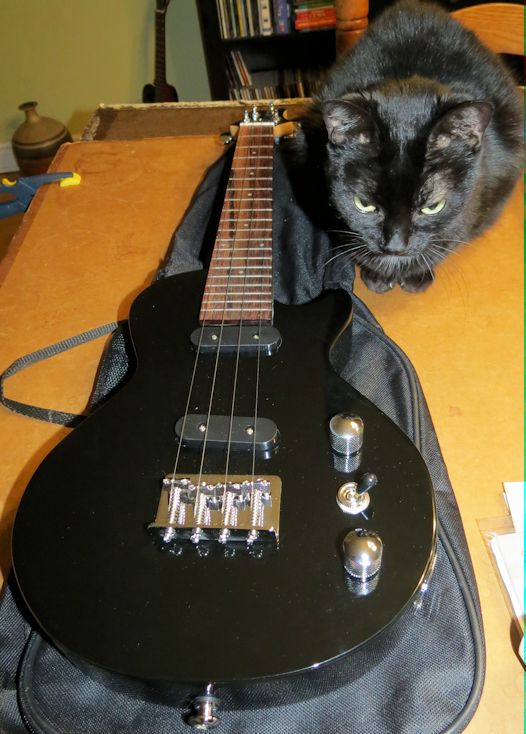


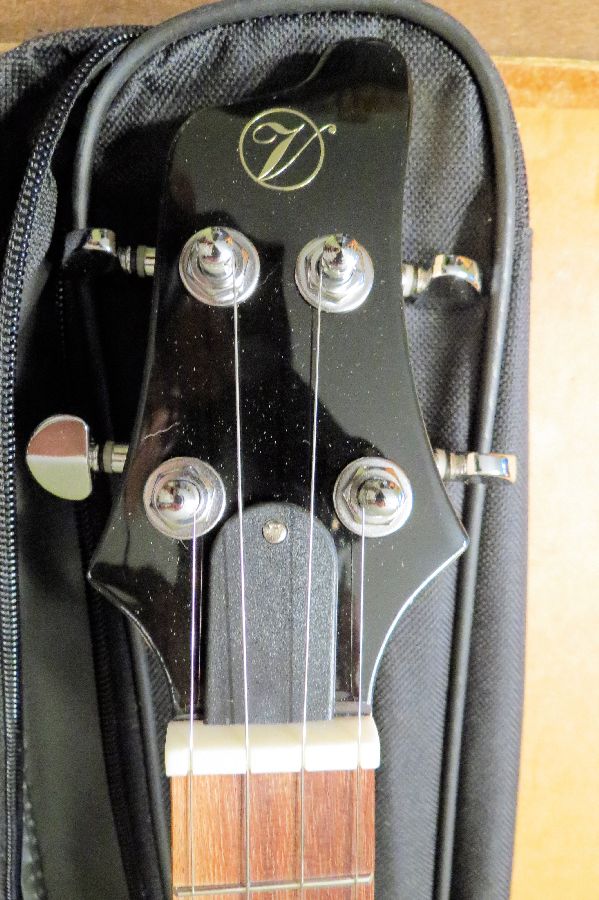
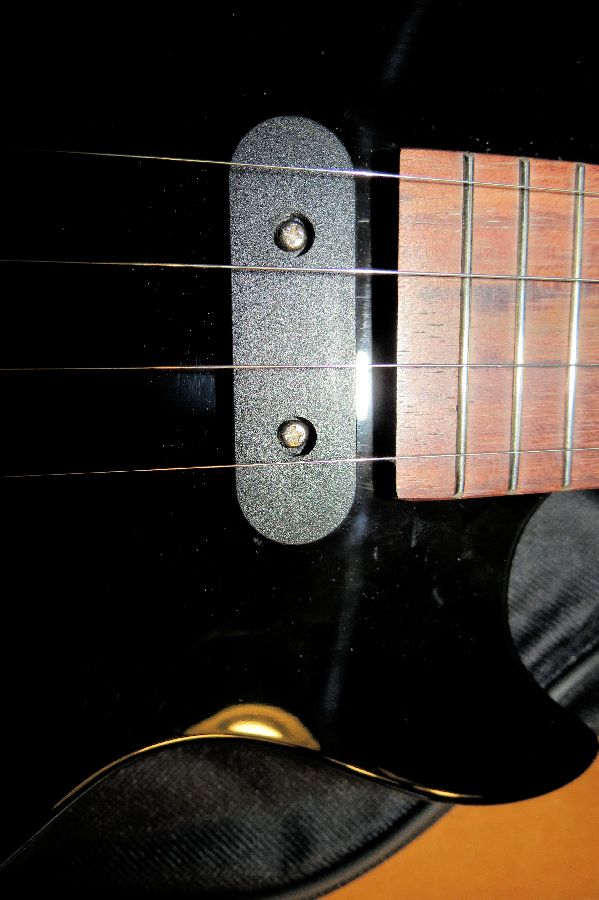
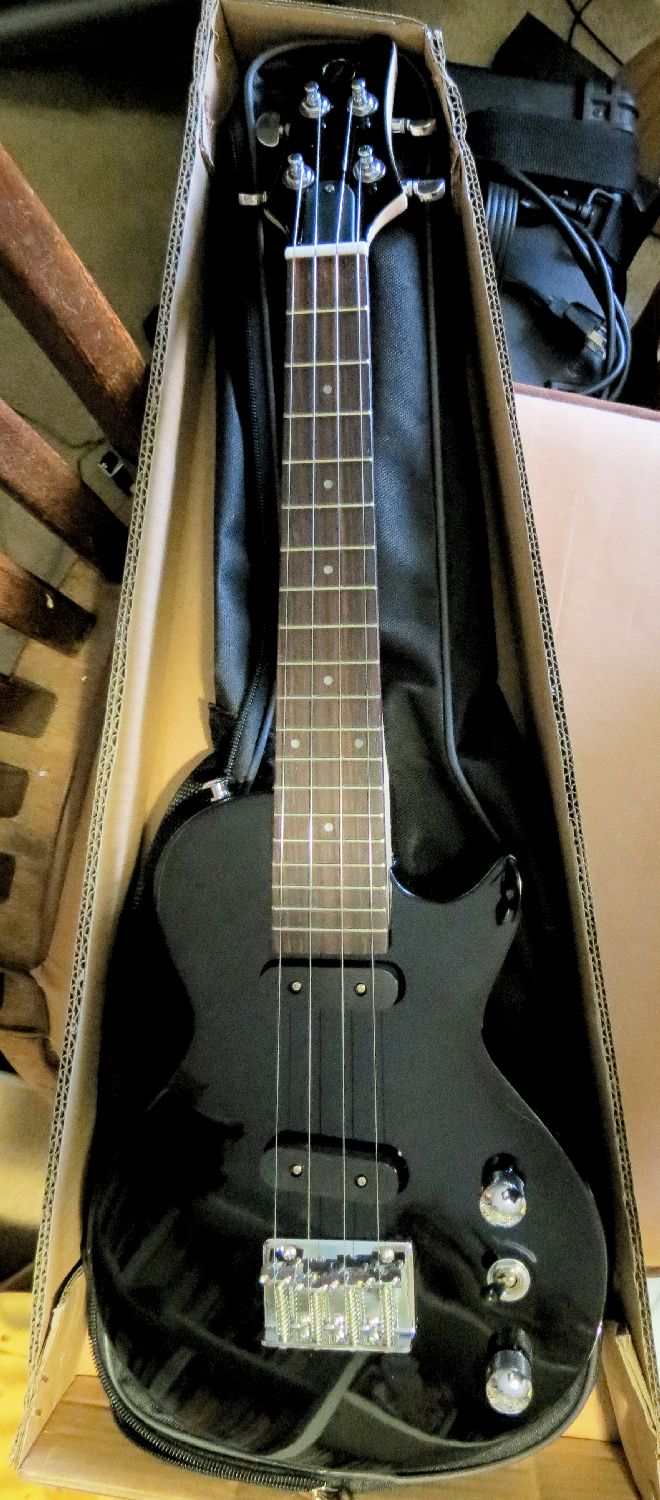

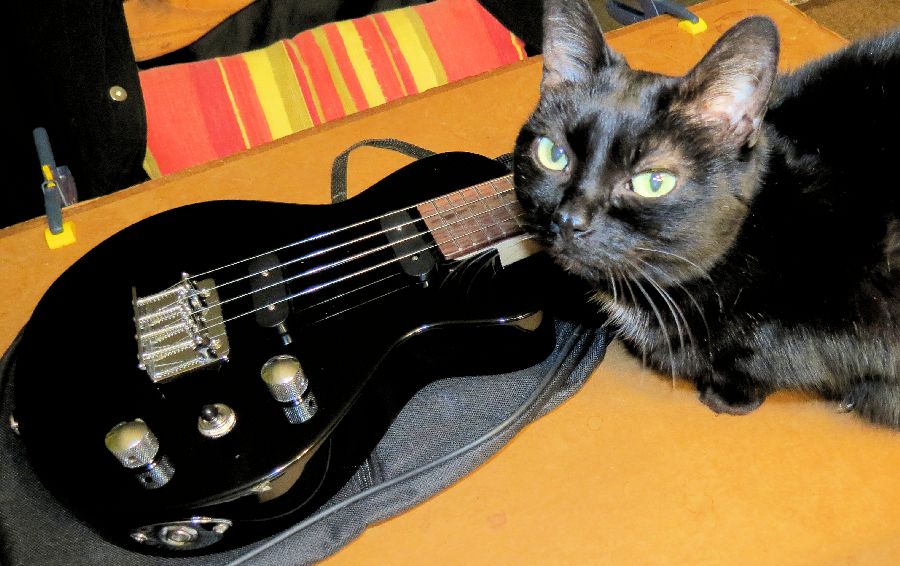
Vorson Electric, Solid-Body
Purists may argue that solid-bodied, metal-stringed instruments aren't ukuleles at all, just miniature electric guitars. I disagree. Like the guitar, the ukulele has evolved into many different forms, and I welcome all of them, if for nothing more than to feed my UAS.
There are now a few solid-bodied, electric ukes around. The top of the line is the Risa Les Paul, but at $1,000 USD, plus shipping (and taxes when landed), it's a pricey proposition for the amateur. Yes, I drool over it, but it's outside my budget.
Vorson is an inexpensive alternative - perhaps not the quality of the Risa, but at around $120 USD, it's a lot less expensive, and an affordable way for players to discover for themselves whether they like to play an electric or steel-stringed instrument.
And yes, there are differences: going from nylon to steel strings for the first time feels like you're playing a cheese slicer. I've played steel-stringed instruments since the mid-60s, so I have the callouses, but new players have to practice a lot to build them up to the point where your fingers stop hurting. Trust me, they will, but it takes time.
As far as I am aware, all of their models are tenor scale. That's fine by me since I play tenor and some baritone.
I had ordered two Vorson instruments from an online US company called Zzounds, but they only shipped one - the one pictured - and didn't inform me. The second was O/S indefinitely. My attempts to substitute the second one for another model listed by them online (and in stock) at the same price and get the same shipping cost as the first were rebuffed and we got into an email confrontation that left me soured on the company. They rate minus one for customer service. So my first recommendation is: find another source if you want one of these.
That being said, the uke was a pleasant surprise: better built than I had expected for the price and the manufacturer (China). It isn't perfect but there are no significant flaws. The frets need a tiny bit of dressing, and the string setup was a little unbalanced, but the latter was easily rectified by tinkering with the adjustable bridge (see photo). The former I'll file down when I next change strings.
And in case the thought occurred to you: no, you cannot replace the strings with nylon. It won't make a sound if you so: it needs the metal strings for the pickups to work.
The body is gloss black - which easily shows the dust (I live in a house with four cats and two dogs...) and fingerprints. But it was well finished and had no spots, flaws, bubbles or cracks. The hardware is chrome plated. Simple, clean look, but you can choose other models if you want a flashier, more colourful look.
It comes with a thin gig bag and a very inexpensive cable to connect to an amp. Neither are worth keeping, and can be easily and inexpensively replaced with better products. And I recommend you get a lightweight guitar strap, too; while it's not as heavy as the Risa, it's heavier than an acoustic uke (about 2.1kg or 4.6lb), so use the two strap buttons it comes with.
Also somewhat unusual: it comes strung high-G, all unwound strings. I'm not sure what gauge strings they're using for the C and high-G, but I don't know of anyone selling such a set, so when it comes time to restring it, I'll probably go with a standard guitar set and make it low G. The strings feel like they're not the top of the line, so I expect to replace them shortly.
There are two pickups, one closer to the bridge for a slightly more treble, metallic sound. There is a three-way toggle switch so you can select either or both, and separate tone and volume controls. You will need an amp, of course, because playing unplugged is pretty close to silence (it works well with the little battery-powered Honeytone, by the way). The input jack is on the bottom edge.
The big question is: how does it play and sound? The latter is easy to answer: it sounds like your amplifier. All electric, steel stringed instruments depend on how your amp is set up for their sound. Of course, the pickups play a major role in the output, and these are low-end pickups that produce acceptable sound you can tweak for better quality through the amp. If you're so inclined, you could upgrade them with better quality pickups, but they'll cost more than the instrument itself.
I don't know yet if they are four or six-pole pickups, but one day I'll take it all apart and check. I get a minor hum at some amp settings, but that might be the cheap cable. It's not present all the time, so I don't think it's the wiring.
Wood? Probably rosewood fretboard; the neck may be maple. The body - can't say but it doesn't feel as heavy as maple. Given the Chinese source, it could be a hardwood I'm not familiar with.
As for play: it works reasonably well. The string height is low, the neck straight, the action smooth and the intonation good. The geared tuners make it easy to tune and it stays in tune well enough. I've played it hard and bent the strings, and the pickups do an adequate job of getting the bends and the rest of the sounds. The balance is a bit wonky and I find the C string somewhat louder than the rest, but I plan to tweak the pickup heights a bit to see if this can be balanced a but better.
Overall, there is nothing to complain about here, especially given the price. I doubt the model shape or design makes any difference to the output, but you have a few choices in body shape, style and finish, some of which cost $20+ dollars more.
Besides, the cool factor of showing up for a jam with a little Les Paul or Stratocaster uke is high enough to warrant the expense.
Would I purchase another Vorson? Probably a
different model and definitely from a different seller, but I'd
own another.
Would I recommend them to others? Yes, if you
want to try an electric, steel-stringed uke, yes if you want to
rock.
Rating (0-5): ***
Status: Owned.
